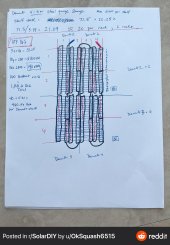MartyByrde
Off-Grid Innovator
Hi this would be a massive battery build from 160 3.2v 280ah LiFePo4 batteries. The busbars would need to be custom copper. Would they need to be wide/thick enough to carry 2800amps?
Also if this was connected to a busbar with 4 Growatt SC48120 each with 120A, 4x120=480. Would that busbar need to be wide/thick enough to carry 3280amps?
Is that the correct way to calculate width/thickness/amps when making custom bars?

Also if this was connected to a busbar with 4 Growatt SC48120 each with 120A, 4x120=480. Would that busbar need to be wide/thick enough to carry 3280amps?
Is that the correct way to calculate width/thickness/amps when making custom bars?



